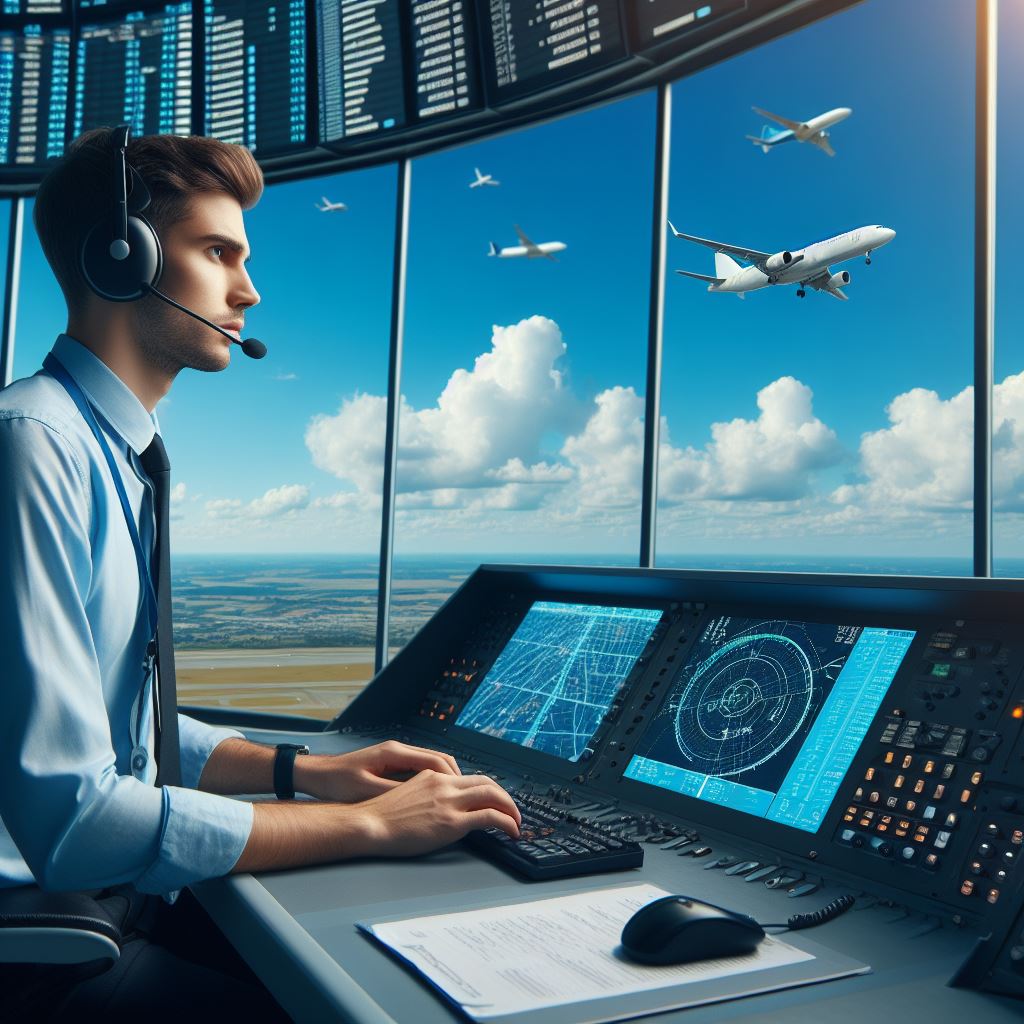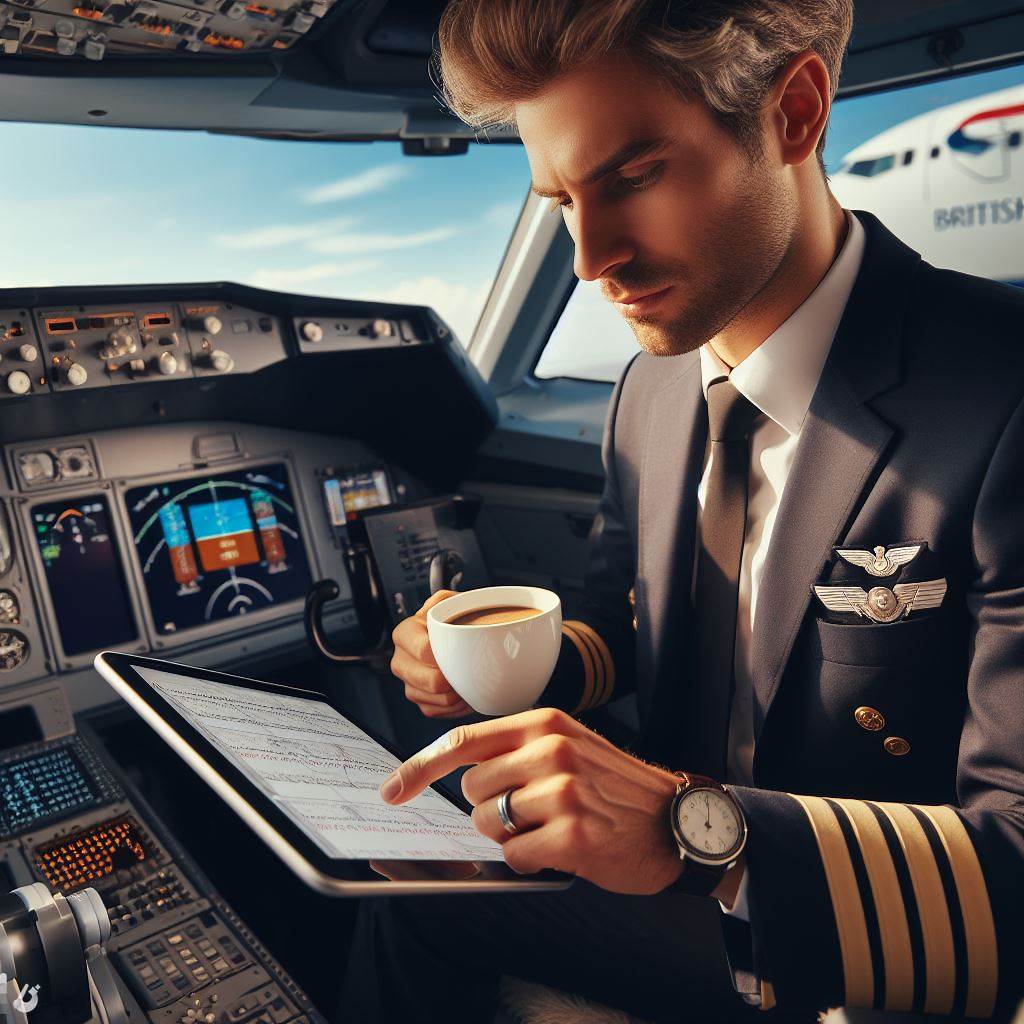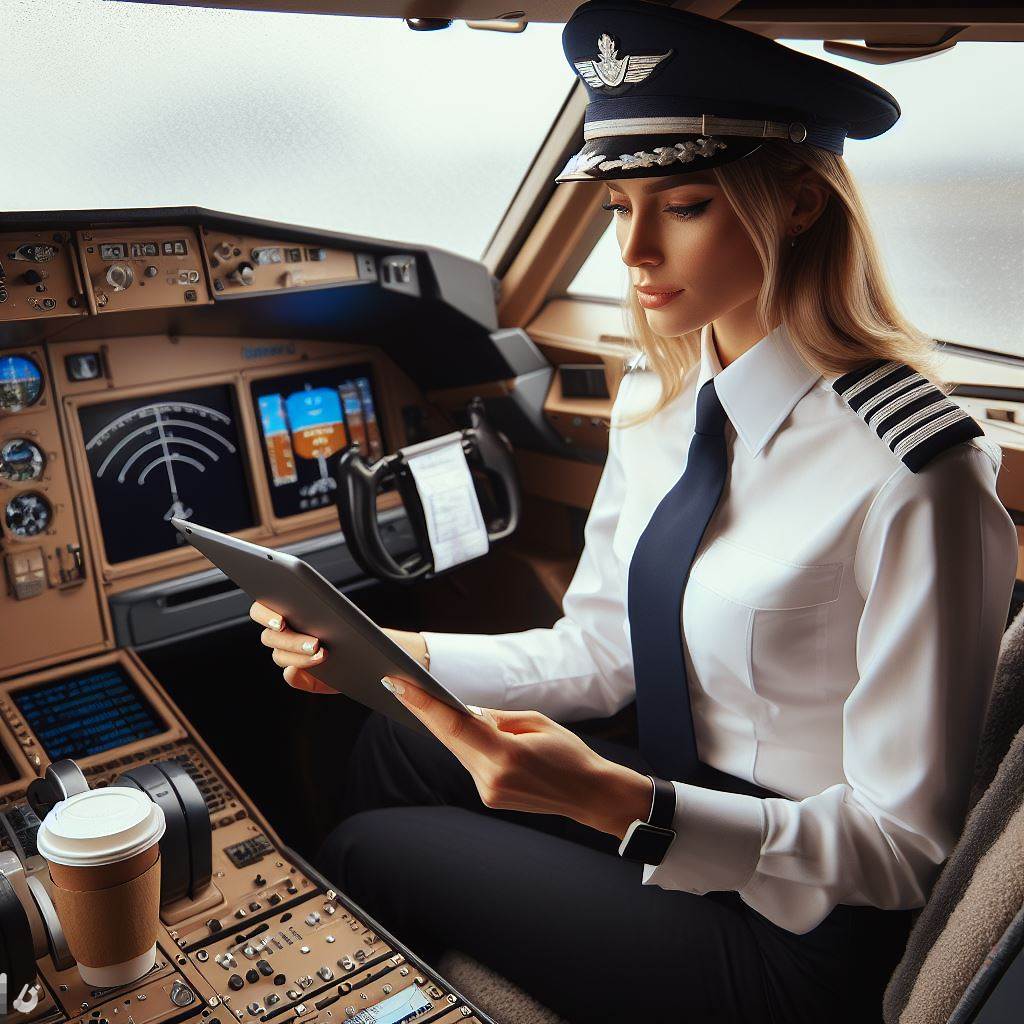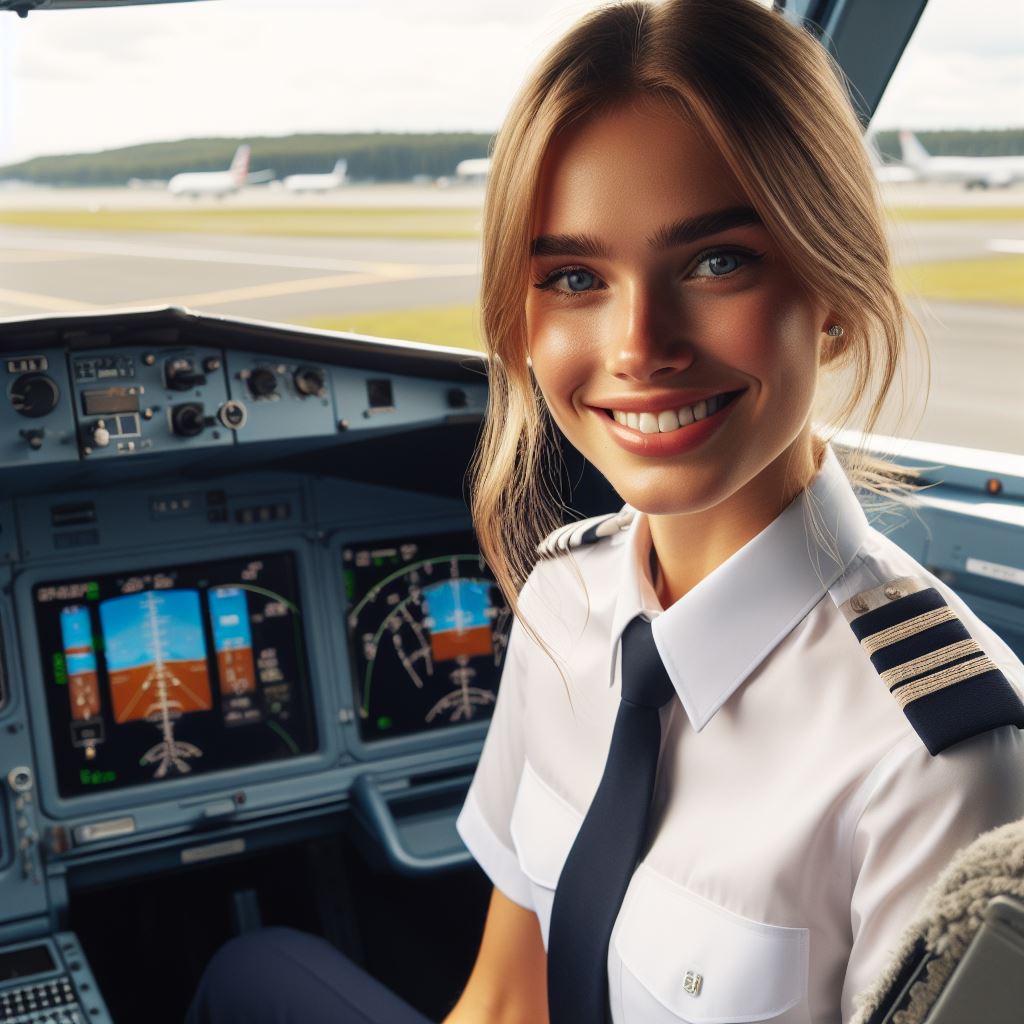Introduction
Being an airline pilot in the UK is a profession that requires extensive training and responsibility.
In this blog post, we will explore what a typical day looks like for these professionals.
The alarm clock goes off at the crack of dawn, signaling the start of another day as a pilot.
The first task is to review the flight plan and weather conditions for the day ahead.
After a hearty breakfast, it’s time to head to the airport, where the aircraft awaits.
The pre-flight checks ensure that everything is in order and the plane is ready for departure.
Once in the cockpit, it’s time to liaise with the cabin crew and go through the safety briefing.
The pilot takes control of the aircraft and prepares for takeoff.
During the flight, the pilot constantly monitors the instruments, communicates with air traffic control, and makes necessary adjustments to ensure a smooth journey.
After landing at the destination, the pilot completes the required paperwork and hands over the aircraft to ground personnel. The day is not over yet, though.
Back at the hotel, the pilot rests and prepares for the next day’s flight.
This downtime is crucial for maintaining focus and alertness while on duty.
In summary, the life of a UK airline pilot involves early mornings, constant vigilance, and the responsibility of ensuring the safety of passengers.
It is a challenging yet rewarding profession that requires dedication and professionalism.
Overview of the Job
A. Role and Responsibilities of a UK Airline Pilot
Being a UK airline pilot is a highly responsible and prestigious profession.
Personalized UK Career Consulting
Receive tailored career guidance designed just for you. Get actionable steps and expert support to boost your career in 1-3 days. Take control of your career now.
Get StartedThese pilots have the crucial role of operating and flying aircraft, ensuring the safety and comfort of passengers.
The primary responsibility of a UK airline pilot is to fly passengers and cargo to different destinations, following strict schedules and routes.
They need to make sure that all flight operations are conducted in compliance with aviation regulations and safety protocols.
In addition to flying the aircraft, airline pilots are responsible for conducting pre-flight inspections, checking weather conditions, and reviewing flight plans.
They need to communicate with air traffic controllers and flight dispatchers to receive necessary updates and instructions.
Furthermore, UK airline pilots are trained to handle emergency situations, such as engine failures or in-flight medical emergencies.
They need to make quick and informed decisions to ensure the safety and well-being of everyone on board.
B. Required Qualifications and Training
Becoming a UK airline pilot requires a high level of education, training, and experience.
The basic qualifications include a minimum age of 18, a valid UK commercial pilot’s license (CPL), and a valid class one medical certificate.
To obtain a CPL, aspiring pilots need to complete rigorous training at a recognized flight school. This includes ground school training, flight training, and simulator sessions.
They must accumulate a specific number of flight hours and pass theoretical and practical exams.
In addition to the CPL, aspiring airline pilots also need to obtain an Airline Transport Pilot License (ATPL).
This license requires further flight experience, including multi-engine aircraft training.
Furthermore, pilots must undergo recurrent training and proficiency checks to maintain their skills and stay updated on industry regulations and procedures.
Your Dream Job Starts with a Perfect CV
Get a tailored CV and cover letter that captures your unique strengths and stands out in your industry. Let us help you make an unforgettable first impression.
Get StartedThey need to continuously upgrade their knowledge and proficiency to ensure the highest level of safety in their operations.
In short, being a UK airline pilot comes with significant responsibilities and requires extensive training and qualifications.
These pilots are responsible for the safe and efficient operation of aircraft, ensuring the well-being of passengers and cargo.
With their skills and expertise, they play a crucial role in the aviation industry and contribute to the connectivity of the world.
Read: Interviews with Veteran UK Pilots
Preparing for the Day
A. The typical schedule of an airline pilot
- An airline pilot’s schedule often consists of irregular hours and long shifts.
- They may have early morning or overnight flights, leading to disrupted sleep patterns.
- Pilots usually have a minimum of 9 to 12 hours of rest before each duty.
- The schedule can vary, with pilots working 5 days a week on average.
- However, they may also have several consecutive days off, allowing for recuperation.
- During busy seasons, their schedules may be more hectic, including weekends and holidays.
B. The pre-flight preparations and briefing process
- Pilots start their day by reviewing weather reports and checking flight plans.
- They thoroughly inspect the aircraft and verify its maintenance and airworthiness.
- The crew gathers to conduct a pre-flight briefing, discussing the flight plan and any relevant information.
- Pilots coordinate with flight attendants regarding passenger counts, special requests, and emergency procedures.
- Computer systems are updated, and all required documentation is checked and prepared.
C. The importance of rest and adhering to regulations
- Rest is crucial to ensure pilots are alert, focused, and able to make critical decisions.
- They must adhere to regulations that specify the minimum rest period before each duty.
- Regulations also limit the number of hours a pilot can fly consecutively or within a specific timeframe.
- The purpose is to prevent fatigue and maintain safety for the crew, passengers, and the aircraft.
- If pilots are fatigued, they are required to report it, and the airline should provide adequate rest.
- Adhering to regulations ensures pilots are physically and mentally prepared for each flight.
Read: UK Pilot Gear and Equipment Essentials
Arrival at the Airport
A. The arrival process and any security checks
Upon arrival at the airport, the airline pilot enters through the staff entrance, bypassing the regular passenger queues.
The pilot then proceeds to the crew room, where they meet with other crew members and receive important updates on the flight.
Before heading to the aircraft, the pilot undergoes thorough security checks.
These checks include identification verification, scanning of personal belongings, and screening for prohibited items.
The pilot must adhere to all airport security protocols and cooperate fully with the security staff.
B. Interactions with ground staff or co-pilots
After completing the security checks, the pilot interacts with ground staff who assist in preparing the aircraft for departure.
This may involve coordinating fueling, catering, and luggage loading.
Effective communication and teamwork between the pilot and ground staff are crucial to ensure a smooth and timely departure.
Optimize Your LinkedIn for Success
Boost your LinkedIn profile with a professional bio, keyword-rich headline, and strategic recommendations that attract recruiters. Stand out from the crowd and get noticed.
Optimize NowThe pilot also interacts with the co-pilot during this stage. They discuss the flight plan, weather conditions, and any operational considerations.
They double-check critical documents, such as the aircraft’s logbook and maintenance records, to ensure everything is in order.
Together, the pilot and co-pilot carry out pre-flight checks, including inspecting the exterior of the aircraft, checking instrument displays, and testing communication systems.
These checks are essential for the safety of the flight and help identify any potential issues before takeoff.
Throughout the arrival process, the pilot maintains a professional and attentive demeanor, as they are responsible for the safety and well-being of the passengers and crew.
Their interactions with ground staff and co-pilots are characterized by clear communication, mutual respect, and a focus on the task at hand.
By actively participating in the arrival process and engaging with the ground staff and co-pilots, the airline pilot sets the foundation for a successful flight.
This collaborative effort ensures that all necessary tasks are completed efficiently and prepares the pilot for the responsibilities that lie ahead in the day as they take to the skies.
Read: Famous British Pilots in History
Pre-flight Checks
A. The pre-flight inspection of the aircraft.
Before every flight, a UK airline pilot must perform a thorough pre-flight inspection of the aircraft.
This includes checking the exterior for any visible damages, leaks, or loose parts.
They examine the tires for proper inflation and examine the wings, flaps, and control surfaces for any signs of wear or damage.
The pilot also inspects the engine, propellers, and exhaust for any abnormalities. They ensure that all fuel caps are securely fastened and check the fuel levels.
The pilot also verifies that all required documents, such as the aircraft’s logbook and maintenance records, are up to date and on board.
This pre-flight inspection is critical to ensure the safety and airworthiness of the aircraft before taking off.
B. The communication and coordination between the pilot and co-pilot.
Effective communication and coordination between the pilot and co-pilot are essential for a successful flight.
Before takeoff, both pilots go through a comprehensive briefing, discussing the flight plan, weather conditions, and any potential issues or concerns.
They review emergency procedures and assign specific tasks to each other during different flight phases.
During the pre-flight checks, the pilot and co-pilot work together to inspect the aircraft, verifying all necessary systems, equipment, and instruments are functioning correctly.
They cross-check each other’s actions to ensure accuracy and safety.
Throughout the flight, the pilots communicate through radio calls, updating each other on the aircraft’s status, navigation, and any changes in flight conditions.
They also coordinate the execution of flight maneuvers, such as takeoff, landing, and altitude changes.
In the event of an emergency, the pilot and co-pilot work together as a team, communicating and taking decisive actions to ensure the safety of the aircraft and its passengers.
The communication and coordination between the pilot and co-pilot are vital for a smooth and safe flight.
In a nutshell, the pre-flight checks involve a careful inspection of the aircraft’s exterior, fuel systems, and required documents.
Effective communication and coordination between the pilot and co-pilot ensure a thorough briefing, accurate execution of tasks, and proper handling of any potential emergencies.
By diligently performing these pre-flight checks and maintaining open lines of communication, UK airline pilots ensure the safety and efficiency of their flights.
Boarding and Departure
A. The boarding process and any announcements
- Passengers eagerly line up at the gate, clutching their boarding passes, waiting for their turn to board.
- The airline staff welcomes passengers with warm smiles, checking their boarding passes before allowing them to enter the aircraft.
- As passengers find their seats, flight attendants assist with stowing luggage and settling into their designated areas.
- The captain’s voice resonates through the cabin as he announces boarding completion and the imminent departure.
- Passengers listen attentively as the captain provides important safety information and highlights the flight’s duration and weather conditions.
- Smoothly, the aircraft doors close, and the flight attendants ensure everyone is seated and buckled up for departure.
- The pilot confirms with the cabin crew that the doors are securely locked, signaling to the ground staff that they are ready to push back.
B. The pilot’s responsibilities during takeoff
- As the engines roar to life, the pilot carefully navigates the aircraft onto the runway, ready for takeoff.
With precise coordination, the pilot communicates with the air traffic control tower to obtain clearance for departure. - A calculated acceleration ensues as the pilot skillfully manages the throttle and controls the direction of the aircraft.
- The pilot maintains a vigilant eye on the airspeed, ensuring it steadily reaches the necessary speed for takeoff.
- Constantly assessing instruments and gauges, the pilot monitors the aircraft’s performance to ensure a smooth ascent.
- Working alongside the co-pilot, the pilot focuses on maintaining the aircraft’s stability during the initial climb.
- With a united effort, the pilot and co-pilot communicate various flight parameters and respond to any alerts or changes.
- As the aircraft gains altitude, the pilot adjusts the flaps and retracts the landing gear, optimizing the plane’s aerodynamics.
- Throughout the ascent, the pilot continuously updates air traffic control on the flight’s progress and adheres to assigned routes.
- The pilot’s ultimate responsibility is ensuring the safety of all passengers and crew during takeoff and the initial stages of the flight.
In this section, we have explored two vital aspects of a UK airline pilot’s day: the boarding process and departure responsibilities.
From the orderly boarding of passengers to the meticulous procedures and coordination involved in takeoff, these duties require both skill and precision.
The pilot’s role is not just to operate the aircraft, but also to ensure the comfort and safety of everyone aboard.
As we move forward in this blog series, we will delve deeper into the pilot’s journey and the various challenges they encounter.
Stay tuned for more insights into the captivating world of a UK airline pilot!
Read: Stress Management for UK Pilots
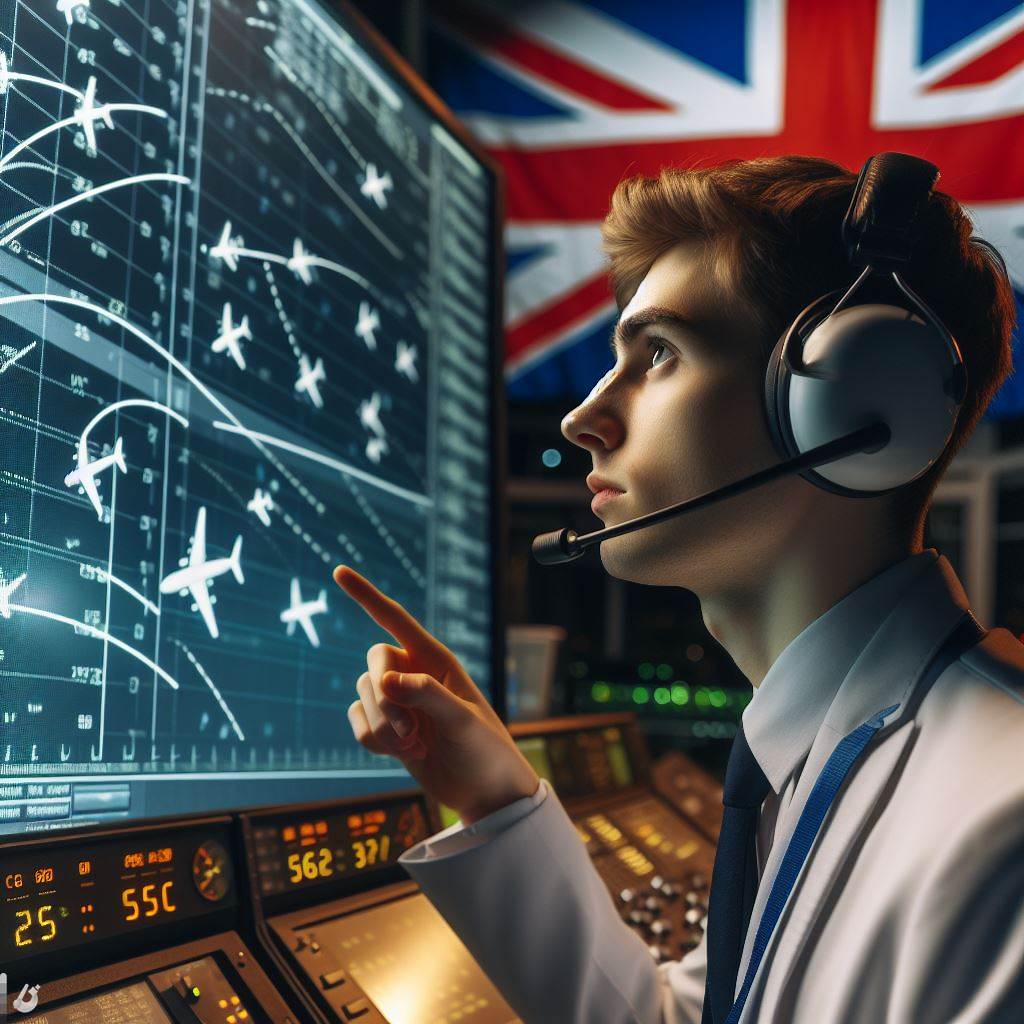
In-flight Duties
A. Responsibilities of the pilot during the flight
- Safely operate the aircraft, including takeoff, landing, and maneuvering during flight.
- Monitor all flight systems and ensure they are functioning properly.
- Continuously assess weather conditions and make necessary adjustments to flight plan.
- Maintain communication with the cabin crew and provide updates on flight progress.
- Perform regular checks of fuel levels and ensure there is enough for the entire flight.
- Monitor and manage the aircraft’s altitude, speed, and direction as required.
- Stay vigilant for any potential hazards or obstacles in the air and take necessary evasive actions.
- Execute emergency procedures and protocols if any unforeseen issues arise.
- Ensure compliance with all aviation regulations and follow standard operating procedures.
- Maintain situational awareness and keep informed of other aircraft in the vicinity.
B. Required communication with air traffic control
- Establish initial contact with air traffic control before departure.
- Obtain clearance for takeoff and receive instructions for departure route.
- Maintain regular communication during the flight to update air traffic control on position and intentions.
- Comply with air traffic control instructions regarding altitude changes, course deviations, and landing approach.
- Request permission for landing and adhere to air traffic control’s guidance.
- Communicate any emergencies or exceptional circumstances to air traffic control for assistance.
- Coordinate with air traffic control to ensure smooth traffic flow and maintain safe separation from other aircraft.
- Follow air traffic control’s instructions in case of airspace restrictions or changes.
- Advise air traffic control of any abnormalities or malfunctions that may affect flight operations.
- Confirm clearances and instructions from air traffic control before executing any critical maneuvers.
In review, during the flight, the pilot holds multiple responsibilities to ensure a safe and smooth journey.
They not only operate the aircraft but also communicate and coordinate with air traffic control to maintain proper control and navigation.
These in-flight duties demand the pilot’s constant attention to detail and ability to adapt to changing circumstances in the dynamic aviation environment.
Navigating and Monitoring
A. The pilot’s role in navigating the aircraft
The pilot plays a crucial role in navigating the aircraft, relying on charts, instruments, and GPS systems.
- Before takeoff, the pilot plots the flight route, considering weather conditions and air traffic.
- During the flight, the pilot continuously monitors the aircraft’s position and adjusts the course if necessary.
- To navigate accurately, the pilot uses various instruments, including the altimeter, compass, and airspeed indicator.
- Additionally, the pilot relies on modern technology, such as GPS systems, to enhance navigation accuracy.
- The pilot constantly cross-references the flight plan with actual position using both traditional and electronic means.
- Any deviations from the planned route due to weather or air traffic must be promptly communicated to air traffic control.
B. The monitoring of systems and instruments
Monitoring systems and instruments is another critical aspect of an airline pilot’s responsibilities.
- The pilot continuously checks the aircraft’s systems, such as hydraulics, engines, and electrical systems, for any abnormalities.
- Monitoring instruments like the fuel gauge, engine instruments, and flight control indicators ensures the aircraft’s safe operation.
- Any unusual readings or malfunctions must be reported to the airline’s maintenance team for further investigation.
- Pilots also monitor communication systems, including radios and transponders, to maintain contact with air traffic control.
- Weather monitoring is essential to anticipate changes that may affect the flight and make necessary adjustments.
- The pilot also keeps a vigilant eye on the nearby traffic, ensuring safe separation from other aircraft.
- In the event of an emergency, the pilot relies on the cockpit instruments to assess and address the situation promptly.
- Regular communication with the flight crew and cabin crew helps the pilot monitor any issues that arise during the flight.
- Effective monitoring of systems and instruments allows the pilot to ensure the smooth and safe operation of the aircraft.
- It is the pilot’s responsibility to remain vigilant and actively monitor all aspects of the flight from start to finish.
Essentially, a UK airline pilot has a vital role in navigating the aircraft and monitoring its systems and instruments.
With meticulous planning, the pilot charts the flight route, relying on various tools and technologies.
Throughout the flight, the pilot continually monitors the aircraft’s position and adjusts the course if necessary.
Additionally, the pilot plays a crucial role in monitoring the aircraft’s systems, instruments, and communications.
By effectively navigating and monitoring, the pilot ensures the safe and efficient operation of the aircraft, prioritizing the well-being of passengers and crew.
Dealing with Challenges
A. Potential challenges or emergencies that may arise
- Turbulence is a common challenge that pilots encounter during flights.
- Severe weather conditions such as thunderstorms can pose risks to the aircraft and passengers.
- Instrument failures, such as a malfunctioning altimeter, require immediate action from the pilot.
- Engine malfunctions or failures can lead to emergency landings or diversions.
- In-flight medical emergencies, like heart attacks, demand swift responses from the pilot.
- Unruly or disruptive passengers may require the pilot to intervene to ensure safety onboard.
- Communication breakdowns between air traffic control and the pilot can create complications.
- Runway incursions from other aircraft or ground vehicles must be handled promptly to avoid accidents.
B. The pilot’s decision-making process during these situations
- The pilot assesses the severity of the challenge or emergency through immediate observation and communication with the crew.
- They consult aircraft manuals and checklists to determine appropriate actions for the specific situation.
- Pilots rely on their training and experience to make quick and informed decisions.
- They prioritize the safety of the aircraft, passengers, and crew above all other considerations.
- In challenging situations, pilots may seek guidance from air traffic control or other aviation professionals.
- They maintain clear and efficient communication with the crew to ensure coordinated actions.
- The pilot weighs possible options and consequences before selecting the most suitable course of action.
- At times, the pilot may have to deviate from the original flight plan to ensure safety.
- Continuous monitoring and periodic reassessment of the situation help the pilot adapt their decisions if necessary.
- Once the challenge or emergency is resolved, pilots thoroughly debrief the situation to identify areas for improvement.
Landing and Disembarking
A. The pilot’s responsibilities during landing
During landing, the pilot is responsible for carrying out a thorough approach and making precise adjustments.
They must maintain communication with the control tower and ensure a smooth touchdown.
The pilot meticulously monitors the aircraft’s speed, altitude, and angle of descent during the landing phase.
They cross-check instruments to ensure accuracy and execute any necessary corrections promptly.
Furthermore, the pilot is in charge of deploying the landing gear at the appropriate time to provide stability and ensure a safe landing.
They also control the flaps, which help reduce speed and increase the aircraft’s lift during descent.
Once the aircraft approaches the runway, the pilot expertly guides it to align with the centerline, ensuring a straight and precise landing.
They calculate the optimal touchdown point using visual references and glide slope indicators on the instrument panel.
Throughout the process, the pilot works closely with the co-pilot, sharing duties and continuously communicating any adjustments or deviations in the landing plan.
B. The post-landing procedures and preparations for the next flight
After a successful landing, the pilot’s responsibilities continue with post-landing procedures.
These include taxiing the aircraft to the designated parking stand or gate, following instructions from ground control.
During taxi, the pilot must be vigilant and navigate the aircraft safely.
They steer the aircraft using rudder pedals and control its speed through engine thrust, maintaining a smooth and controlled movement on the ground.
Once the aircraft is parked, the pilot begins various post-flight tasks.
They shut down the engines, turn off all electrical systems, and conduct a final inspection of the aircraft to ensure it is secured and in proper condition.
The pilot also coordinates with ground crew members, who assist in disconnecting the ground power and removing necessary equipment.
The pilot reviews the flight logs, documenting any irregularities or issues that occurred during the flight.
Simultaneously, preparations for the next flight begin.
The pilot consults weather reports, flight schedules, and coordinates with ground control to obtain the required clearance and route information.
Additionally, the pilot performs a pre-flight inspection of the aircraft for the upcoming flight, checking important systems, fuel levels, and ensuring all required supplies are on board.
Before the next departure, the pilot attends briefing sessions with the crew to discuss the flight plan, potential risks, and any specific instructions or considerations for the upcoming journey.
In summary, a pilot’s role during landing involves precise control and effective communication, ensuring a safe touchdown.
After landing, they undertake various post-flight tasks while preparing for the next flight, ensuring a smooth transition and continued operational efficiency.
Conclusion
The day of a UK airline pilot involves meticulous planning, pre-flight checks, flying the aircraft, monitoring weather conditions, communicating with air traffic control, and ensuring passenger safety.
Despite the long hours and occasional turbulence, the excitement and fulfillment of flying high in the sky make it a profession that is truly unmatched.
It requires a high level of skill and expertise, as any slight error can have serious consequences.
The adrenaline rush that comes with taking off and landing and the sense of accomplishment in safely transporting passengers makes being an airline pilot truly rewarding.
The aviation industry heavily relies on pilots to ensure that flights are conducted smoothly and passengers reach their destinations safely.
Whether it’s a short domestic flight or a long-haul international journey, pilots play a crucial role in the efficient functioning of the aviation sector.
With the ongoing advancements in technology and increasing air travel demands, the role of UK airline pilots will continue to be of utmost importance.
So next time you board a plane and buckle up, remember the dedicated and skilled individuals who make your journey possible.
[E-Book for Sale]
500 Cutting-Edge Tech Startup Ideas for 2024 & 2025: Innovate, Create, Dominate
$19.99 • 500 Tech Startup Ideas • 62 pages
You will get inspired with 500 innovative tech startup ideas for 2024 and 2025, complete with concise descriptions to help you kickstart your entrepreneurial journey in AI, Blockchain, IoT, Fintech, and AR/VR.

